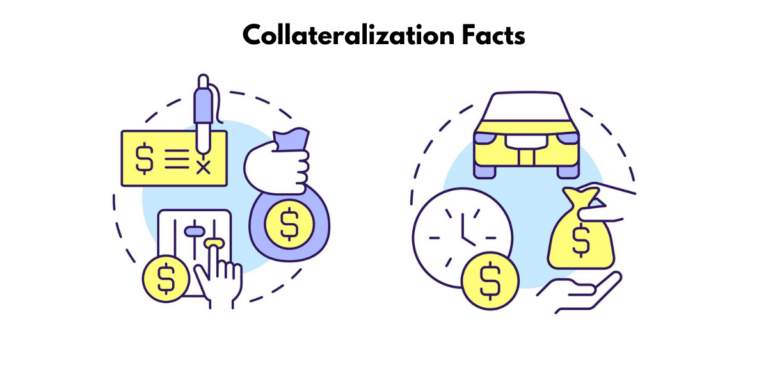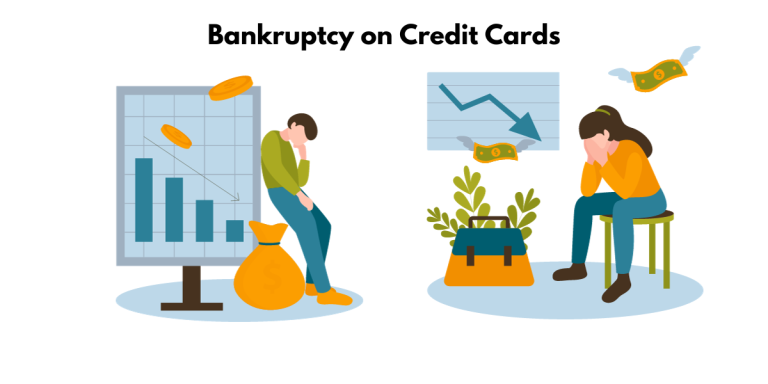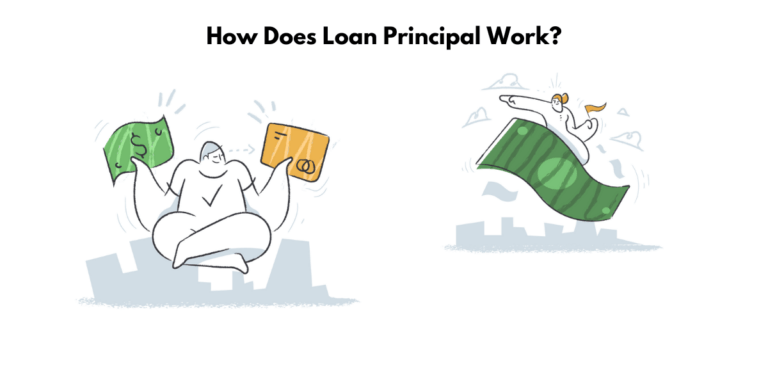How does cross collateralizing work: The characteristics and pitfalls of a cross collateralization loan
How does cross collateralizing a loan work
When you borrow money, the lender will usually require some collateral. This allows them to recoup their losses if they cross default on the loan.
Cross collateralization is when you use more than one asset as collateral for a loan. For example, if you have a home equity line of credit (HELOC), your home acts as collateral for the loan.
Cross collateralization can be beneficial because it allows you to access more funds than what is available with a single asset. However, it also comes with some risks you should be aware of before taking out a loan.

What is meant by cross collateralization?
Cross collateralization is a financing arrangement in which two or more assets are pledged as collateral for a loan. This can be done to secure a larger loan amount than possible with just one asset or to get better terms on loan. Cross collateralization can be a useful tool for borrowers, but it also comes with some risks that should be considered before entering such an arrangement.
How does cross collateralization work?
Cross collateralization is a financing technique that involves using multiple assets as collateral for a single loan. This can be done by pledging different types of collateral to secure the same loan or using the same collateral to secure multiple loans. Cross collateralization can be an effective way to access more capital, but it also comes with some risks.
When collateral is pledged to secure a loan, the lender has a claim on that asset if the borrower defaults. Cross collateralization amplifies this risk by pledging multiple assets as collateral. If the borrower defaults, the lender could foreclose on all the pledged assets. This could leave the borrower without assets, making it difficult to repay the debt.
What does cross pledged mean?
Cross collateral loan is when two or more loans are secured by the same asset. This means that if you default on one loan, the lender can seize the asset to repay the debt. In some cases, the lender may even be able to go after other assets that are not pledged as collateral.
What does cross-collateralized mean in real estate?
Cross collateralization is a common practice in the real estate industry, whereby two or more properties are used as collateral for a loan. This can be done either by taking out a single loan that covers both properties or by taking out separate loans and using both properties as collateral for each.

What are the characteristics of cross-collateralization?
Cross-collateralization typically occurs when a borrower takes out multiple loans and pledges the same asset as collateral for each loan. For example, a borrower who has a house with equity could pledge the house as collateral for a home equity loan, a HELOC, and a first mortgage. If the borrower defaults on any loans, the lender could foreclose on the house.
Cross-collateralization can benefit borrowers because it allows them to access more funds than they can without using the same asset as collateral for multiple loans. However, cross-collateralization can also be risky because the borrower could lose the asset if they default on any of the loans.
It is a form of collateralization that allows multiple assets to be used as security for a single loan
Cross-collateralization is the practice of using an asset that is already securing an existing loan to secure a new loan.
It differs from collateralization because cross-collateralized loans are typically cheaper and easier to qualify for than other types of loans. Still, they come with greater risk, as you could lose one or multiple assets if you default on any of your loans. Collateralization refers to using multiple assets as collateral for one or more loans. For example, suppose you have several properties. In that case, you can use them as collateral for a construction loan, or if you hold several types of loans with the same bank, then they can aggregate your collateral to secure all of those combined loans.
It involves using collateral from multiple sources to secure a single loan
Cross-collateralization is the process of using the same collateral to secure multiple loans.
This practice can involve using an asset already securing an existing loan as collateral for a new loan or pooling multiple assets together to secure one or more loans. Cross-collateralization provides borrowers with cheaper and easier access to credit. Still, it also increases their risk since they could lose all their assets if they default on any of their loans. Additionally, lenders may be willing to accept property already serving as collateral for other loans as additional security for new ones.
It allows lenders to secure a loan against multiple assets, even if only a portion of these assets are needed to repay the loan
When a lender wants to secure a loan against multiple assets, it may file a blanket lien with the secretary of state to stake its claim on those assets. This is the first form of cross-collateralization. The lender can then aggregate these collateralized assets and use them as security against one or more loans. This helps reduce its risk exposure because if one borrower defaults on their loan, the lender still has access to all their collateralized assets.
Cross-collateralization helps lenders secure a loan against multiple assets by aggregating the borrower’s assets and filing a blanket lien with the secretary of state. First, the lender will request that the borrower provide collateral to reduce its risk exposure. If a single asset is insufficient to persuade the lender to loan money, they may require multiple assets as collateral. The lender will file a blanket lien with the secretary of state, which stakes its claim on those assets and ensures that they will be repaid if necessary.
It allows lenders to obtain multiple assets as security for a single loan
When cross-collateralization is used, borrowers can use an existing asset that is already securing an existing loan to secure a new loan. This allows lenders to access multiple assets as security for one loan. For example, if a borrower owns multiple properties, they can put up all of those properties as collateral for a construction loan. Or if they hold several types of loans with the same bank—say, a car loan, business loan, and mortgage—then the bank can aggregate these loans together and use them as collateral for all of them combined.
It involves the use of collateral from multiple sources to secure a single loan
Cross-collateralization is the practice of using assets that are already securing an existing loan to secure a new loan.
This can be done when a pool of several assets is used to secure one or more loans. Cross-collateralized loans are typically cheaper and easier to qualify for than other loan types. Still, they come with greater risk if you default on any of your loans and risk losing one or multiple assets.
Cross-collateralization uses one or more assets already insufficient in an existing loan to secure a new loan.s collateralization allows borrowers to take out cheaper and easier-to-qualify loans, as they do not need to provide as much collateral. However, it comes with greater risk as if the borrower defaults on any of their loans, they may lose one or multiple assets. Cross-collateralized loans are typically from the same financial institution and use assets that act as backing for one loan to secure another simultaneously.
It allows the creditor to obtain multiple assets as security for a single loan
Cross-collateralization is the process by which a borrower uses an existing asset that is securing an existing loan to secure a new loan.
By cross-collateralizing, the creditor can obtain multiple assets as security for one loan. For example, if you own multiple properties, putting up all of those properties as collateral secures a single construction loan. Or, if you hold several types of loans with the same bank—say, a car loan, business loan, and mortgage—then the bank might aggregate your collateral to secure all of these loans combined. This allows creditors to reduce their risk while still providing borrowers with access to cheaper loans than other types of loans would provide them with.
It allows creditors to secure a loan against multiple assets, even if only a portion of these assets are needed to repay the loan
Cross-collateralization is the practice of using multiple assets to secure one or more loans.
Cross-collateralization aims to reduce the risk exposure for creditors when lending money. By aggregating multiple assets into one collateral package, lenders can ensure sufficient security if the borrower defaults on their loan. Cross-collateralization allows creditors to take ownership of multiple assets and file a blanket lien with the secretary of state to stake their claim on those assets. This makes it more difficult for borrowers to escape paying back their loans if they default on them.
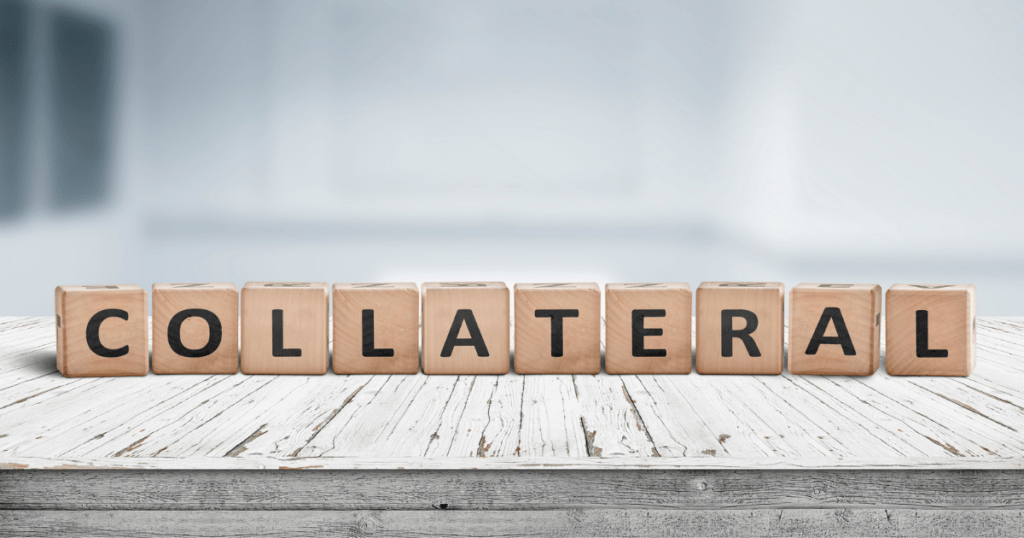
What are the pitfalls of cross-collateralizing?
While cross-collateralization can provide some benefits for lenders, there are also potential pitfalls that borrowers should be aware of. One of the biggest dangers of cross-collateralizing is that it can put a borrower’s other assets at risk if they default on their loan. This means that if a borrower takes out a loan and secures it with multiple assets, they could lose all of those assets if they cannot repay the loan. This can be a particularly risky proposition for borrowers who have a lot of assets and could potentially stand to lose a lot if they default on their loan.
Increased risk of losing all of one’s assets
Cross-collateralizing increases the risk of losing assets because it allows lenders to seize multiple valuable assets if a loan is not repaid. This is the case for any secured loan, but the risk increases when multiple assets are pledged as collateral since the lender may lose access to more than one valuable asset in case of default. Additionally, cross-collateralizing may affect future loan decisions as it can negatively impact a business’s credit score due to a lack of personal liability on business debts.
Increased loan costs
When cross-collateralizing loans, the borrower combines two or more loans into one larger loan with a higher loan-to-value (LTV) ratio. This increases the project’s overall security value and the risk associated with it, which can lead to higher lender’s mortgage insurance (LMI) premiums.
As a result, borrowers who collateralize their loans may end up paying more in LMI premiums than they would if they had taken out stand-alone loans with individual LVRs of up to 80%.
Difficulties in obtaining loans
One of the potential pitfalls of cross-collateralizing is that it may become difficult to obtain loans in the future. This is because lenders may be reluctant to extend credit to borrowers who have already used their collateral. As a result, borrowers may find themselves in a situation where they cannot obtain the necessary financing.
Increased paperwork and administrative costs
Cross-collateralizing increases paperwork and administrative costs because it requires the borrower to provide additional collateral to secure the loan.
As a result, borrowers may have to spend more time and money on legal documents, appraisals, and other processes related to securing additional collateral. Additionally, banks may incur increased costs for managing multiple assets with different values and associated risks.
Increased risk of foreclosure
Using your home as collateral for multiple loans can increase the risk of foreclosure. Commercial lenders may be able to initiate a foreclosure on your home even if they do not hold the first lien position.
This increased risk can result in losing your home if you cannot keep up with loan payments on one of the loans.
Increased risk of bankruptcy
Cross-collateralization increases the risk of bankruptcy because it allows credit unions to take additional collateral from borrowers if they default on one of their loans. This means that if you file for bankruptcy, the credit union may be able to seize an asset that was not included in your original loan agreement. This adds an extra layer of complexity and risk when considering filing for bankruptcy.
Difficulty in tracking different types of collateral
The difficulty in tracking different types of collateral can affect cross-collateralization effectiveness. This is because it can be difficult to track which assets are being used to secure which loans, making it difficult for lenders to know if there has been any deterioration in value or loss of security for any given loan.
This can lead to a lack of transparency in the system and increased risk for lenders and borrowers. It may also make it difficult for lenders to assess whether or not a borrower can meet their obligations if one type of collateral becomes unavailable due to unforeseen circumstances.
Increased complexity of financial arrangements
The increased complexity of financial arrangements has affected the effectiveness of cross-collateralization due to the increased number of parties involved in the loan transaction. This increases the risk that one party might not fulfill their obligations and could potentially lead to significant financial losses for other parties involved in the deal.
As a result, lenders have taken steps to ensure that their loans are adequately secured by cross-collateralizing assets across multiple counterparties to minimize risk exposure and protect against potential losses from defaulting borrowers. This increased complexity can make it more difficult for lenders to manage these complex relationships effectively, leading to mistakes such as misapplying collateral or overlooking important terms in loan documents.
Risk of disputes between creditors
Cross-collateralizing gives lenders more rights than a business may realize. It allows them to seize assets and other collateral if one loan is not paid, which could lead to disputes between creditors.
Disputes between creditors can lead to confusion over the right to claim an asset’s value and potentially costly legal battles over who gets what portion of it. This can add stress and costs for both parties involved in the dispute and delay any payments that need to be made on time.
Risk of missing payments and penalties
Cross-collateralizing can be a great way to get access to extra funds when you need them. However, there are some risks involved that you should be aware of before you enter into this type of agreement.
One of the biggest risks is that you could miss a payment. This would not only damage your credit score, but you would also be subject to any penalties outlined in the agreement. Additionally, if you cannot make the payments, the lender could take possession of the collateral.
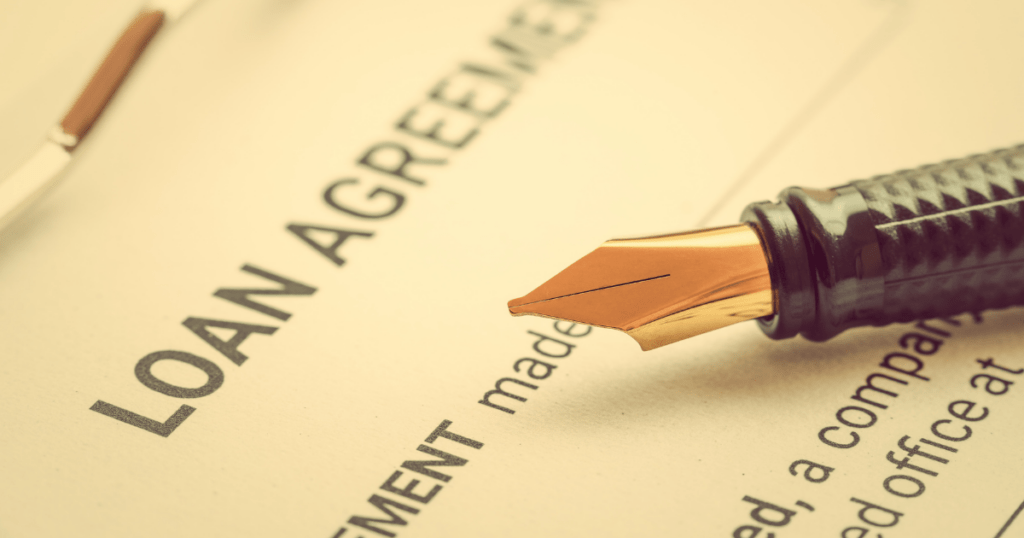
How to choose between a single and cross-collateralization loan
When it comes to business loans, there are a lot of options out there. But the two most common types of loans are single collateral and cross collateralization. So how do you know which one is right for your business?
Here’s a quick rundown of each type of loan:
Single collateral loans: As the name suggests, this type of loan is secured by only one asset. These can be accounts receivable, inventory, or even real estate. The advantage of a single collateral loan is that it’s usually easier to qualify for.
Cross-collateralization loans: This type of loan uses multiple assets as collateral. So if you default on the loan, the lender can seize any of the assets you’ve put up as collateral. The advantage of a cross-collateralization loan is that it often comes with lower interest rates.
So which one should you choose? It depends on your business and the assets available to use as collateral.
Step 1: Determine your needs
The first step in deciding whether to single or cross-collateralize your loan is determining your needs. If you need a large loan amount, then cross-collateralization may be the best option for you. This is because you can use multiple collateral pieces to secure the loan, increasing your chances of approval. However, single collateralization may be the better option if you only need a small loan amount. This is because you will only need to put up one piece of collateral, which can reduce your risk of losing your collateral if you default on the loan.
Step 2: Find a lender that meets your needs
When choosing a lender, it is important to consider your needs and objectives. Some lenders specialize in single-collateral loans, while others may offer cross-collateralization options. There are advantages and disadvantages to both. Single-collateral loans may be easier to obtain, but cross-collateralization can provide additional security for the lender. It is important to compare terms and conditions before selecting a loan.
Step 3: Different Research types of loan options available
When ready to start looking for a loan, you must decide between single and cross-collateralization. Single collateralization means your loan is secured by only one asset, such as your home or car. Cross-collateralization means that your loan is secured by more than one asset, such as your home and car.
Step 4: Compare rates, terms, and other factors
When choosing between a single and a cross-collateralization loan, it is important to compare rates, terms,, and other factors to ensure you get the best deal. For example, you can shop for the best interest rate and get multiple offers on your preferred loan type.
When considering cross-collateralization loans, it is important to consider that they typically have higher interest rates than single-collateralized loans due to the additional risk associated with putting up multiple assets as security for one loan. Additionally, due to the need for additional security agreements, cross-collateralized loans often require more paperwork than single-collateralized loans, and they may take longer to process than traditional personal loans or mortgages.
Step 5: Consider the amount of property you own or plan to purchase
For those who plan to purchase or own more than one property, a cross-collateralization loan can provide more flexibility regarding how much equity is withdrawn from each property and how the sales funds are used. With single collateralization loans, borrowers are limited in how much equity they can withdraw from their properties. They may have to pay fees for additional funds if their lender does not offer competitive rates.
On the other hand, those with single collateralization loans may find it easier to move their portfolio if their lender no longer meets their needs since there is only one property involved rather than multiple properties that need to be revalued and transferred between lenders. Additionally, single collateralization loans often have lower interest rates due to reduced risk exposure for lenders compared with cross-collateralization loans requiring more complex calculations when considering multiple properties as security against loan amounts.
Step 6: Read reviews and customer ratings
Reviewing reviews and customer ratings can help you choose between a single collateralization loan and a cross-collateralization loan. With a single collateralization loan, all of your assets are secured by one loan, while with a cross-collateralization loan, multiple assets can be used as collateral for multiple loans. Reviews and customer ratings can provide insight into the quality of the lender’s service and any issues customers have encountered while using their services.
However, reading reviews and customer ratings should be used with caution when considering a cross-collateralization loan since there may be more than one lender involved in providing the loans. This could lead to difficulties in communication or disagreements over repayment terms if one lender does not agree with how another is handling things. Additionally, it is important to ensure that all lenders have similar requirements for approval before applying for their services to avoid any problems down the line due to discrepancies between them.
Step 7: Check if the lender offers borrower insurance
Lenders Mortgage Insurance (LMI) is a type of insurance that lenders may require borrowers to purchase to protect their investment in case of default. It is usually required when the loan-to-value ratio (LTV) is above 80%, meaning that the borrower’s funds finance less than 20% of the property value.
This type of insurance helps protect lenders from losses if a borrower defaults on their loan and cannot repay them. LMI premiums are calculated based on the total amount borrowed, so they become higher when cross-collateralization is used due to increased exposure for the lender. Furthermore, when cross-collateralized loans are sold or transferred between lenders, revaluation may be required, which could increase costs further for borrowers who need access to sales proceeds from their investments. LMI can also make it more difficult for borrowers seeking additional funds from their current lender if competitive rates are unavailable or not provided anymore. Finally, since LMI premiums can increase significantly with cross-collateralization, it’s important to consider this factor when choosing between single and cross-collateralizing loans and other associated costs, such as commissions/brokerage fees which may also be affected by this decision-making process.
Step 8: Ask questions if there is something you do not understand
Ask questions if you are unsure about any aspect of the loan process. The last thing you want is to sign on for a loan that does not fit your needs. Cross-collateralization can be helpful, but it is important to understand the terms and conditions before signing on the dotted line.
Step 9: Verify the information provided by the lender
It is important to verify the information provided by the lender before choosing a single or cross-collateralization loan. The terms of each type of loan vary, and it is important to understand all aspects of the loan before signing. Single collateralization loans are typically more expensive, but they may be the better choice for borrowers with little equity in their homes. Cross-collateralization loans are typically less expensive, but they put the borrower’s home at risk if they cannot make their payments.
Step 10: Get approval before applying for a loan
It is important to get approval before applying for a loan with single and cross-collateralization because it allows you to compare different offers and ensure you get the best deal possible. By shopping around for the best interest rate and getting multiple offers on your preferred loan type, you can ensure that you take all possible steps to get the most favorable terms possible. Additionally, obtaining approval before applying for a loan gives you time to research your options and understand the security measures required if you choose a cross-collateralized loan.
- How to File for Bankruptcy on Credit Cards: The Complete Guide to Bankruptcy and Credit Card Debt - October 25, 2023
- What is loan principal and how does it work? - September 24, 2022
- Building Your Business: Separating Your Personal and Business Finances - March 2, 2022





